#mary edwards walker
Text
Que las generaciones futuras sepan que también las mujeres uniformadas garantizaron su libertad.
—Mary Edwards Walker
103 notes
·
View notes
Text

At the start of the Civil War, Dr. Mary Edwards Walker went to Washington D.C. to enlist in the Union Army as a medical officer. As a woman she was denied the opportunity, but volunteered nonetheless, working near the front lines at Fredericksburg and the battles that today make up Chickamauga & Chattanooga National Military Park. Walker would gain her commissions in 1863 as the first female surgeon in the U.S. Army. Following the war, she was awarded the Medal of Honor, the first, and inexplicably still only, woman to to be given this highest honor.
4 notes
·
View notes
Text

One of the most bizarre interactions I've ever had on the birdsite is the person who made a burner account just to yell "Mary EDWARDS!" at me as if I was calling Dr. Mary Edwards Walker (pictured) by her husband's surname.
Reader, her husband's name was Albert Miller.
(The Spaniard who was a Keicho Embassy conspiracy theorist might be a close second for bizarre interactions I've ever had on the birdsite.)
6 notes
·
View notes
Link
On a chilly Thursday in January 1873, hundreds of women convened at the National Hotel in Washington, D.C. It was the fifth convention of the National Woman Suffrage Association and a 44-year-old Susan B. Anthony had taken the floor. She spoke of unity, forming a national women’s newspaper, and the vote. But few people were paying attention to Anthony. Even suffragist leader Elizabeth Cady Stanton was distracted, verging on annoyed.
Because there, just to the side of the podium, an imposing woman stood in pants and a slimming man’s coat, waiting. Her name was Mary Edwards Walker. The first female surgeon in the U.S. Army and a prisoner of war during the Civil War, Walker, who flouted the day’s rigid gender norms, was something of a celebrity. As more and more of the crowd noticed her, they began to murmur and whisper, “she’s here!”
But still Walker stood, patiently waiting for Anthony to yield the floor. When Anthony finally did so, Walker launched into a scathing critique of the NWSA, and Stanton and Anthony with it. They had abandoned the cause of dress reform, she said, giving up the fight for women to renounce health-damaging corsets. Anthony and Stanton lacked courage, she said. At a later suffrage convention, Anthony and Stanton called the cops on Walker. After narrowly avoiding arrest, Walker shouted at the pair, “you are not working for the cause, but for yourselves!”
8 notes
·
View notes
Text
Feminist loneliness
I feel so lonely. I want to experience sisterhood. I want to connect with likeminded women. I’m not sure why I want this so badly. Is it because I want to feel validated? I’m not actually that worried about whether I’m valid right now. I’m not worried that I’m wrong with my opinions. I’m worried that I’m alone with my opinions. I’m sure there are plenty of women, both in the present and in the past, who feel the same way as me. Why are there no radical feminist groups in even remotely my area? Dr. Mary Walker was hated by the people around her, even the other feminists she was in contact with weren’t nearly as radical as her. Perhaps she felt the same way as I do now. God knows how many women there have been, who felt all alone in their beliefs, who, even after their death, will never be known by other radical women. These women were still a part of women’s liberation. If they resisted, even only in their minds, they are a part of female liberation. So am I.
#feminism#radfem#radical feminism#sexism#feminist#history#loneliness#lonely#female solidarity#female class consciousness#sisterhood#consciousness raising#dr mary walker#mary walker#mary edwards walker#thats what i get for#watching a tv show about#second wave feminism#eventhough it would certainly help#i dont need access to#feminist spaces#in order to be a part of it#i can take the space that i have and#make it feminist#just like my#foremothers#and#sisters#do
1 note
·
View note
Text

Movie Odyssey Retrospective
The Phantom of the Opera (1925)
By the time French journalist-turned-novelist Gaston Leroux published Le Fantôme de l'Opéra as a serial in 1909, he was best known for his detective fiction, deeply influenced by Sir Arthur Conan Doyle and Edgar Allan Poe. The Phantom of the Opera plays out like a Poe work – teeming with the macabre, painted with one character’s fanatic, violent lust. In serial form and, later, as a novel, Leroux’s work won praise across the West. One of the book’s many fans was Universal Pictures president Carl Laemmle who, on a 1922 trip to Paris, met with Leroux. While on the trip, he read Phantom (a copy gifted to him by Leroux) in a single night, and bought the film rights with a certain actor already in mind.
Laemmle’s first and only choice for the role of the Phantom was about to play Quasimodo in Universal’s 1923 adaptation of Victor Hugo’s The Hunchback of Notre Dame. That actor, Lon Chaney, had subsisted on bit roles and background parts since entering into a contract with Universal in 1912. Chaney, who was about to sign a contract with Metro-Goldwyn-Mayer (MGM), became an instant sensation the moment The Hunchback of Notre Dame hit theaters. Audiences and critics in the early 1920s were simultaneously horrified at the sight of his Quasimodo yet, crucially, felt a profound empathy towards the character.
In his prior films, as well as Hunchback, Chaney separated himself from his fellow bit actors with a skill that almost no other actor in Hollywood possessed: he was also a makeup artist. At this time, actors applied their own makeup – often simple cosmetics or unconvincing facial hair. None of the major Hollywood studios had makeup departments in the early 1920s, and it would not be until the 1940s that each studio had such a department. Chaney, the son of two deaf and mute adults, was also a master of physical acting, and could expertly use his hands and arms to empower a scene. Though already bound for MGM, Chaney could not possibly pass up the role of Erik, the Phantom. Despite frequent clashes with director Rupert Julian (1923’s Merry-Go-Round and 1930’s The Cat Creeps; despite being Universal’s most acclaimed director at this time, Julian was either sacked or walked away mid-production), Chaney’s performance alone earned him his place in cinematic history and, for this film, an iconic work of horror cinema and silent film.
As the film begins, we find ourselves at the Palais Garnier, home of the Paris Opera. The Opera’s management has resigned, turning over the Palais Garnier to new ownership. As the ink dries on the contract and as the previous owners depart, they warn about a Phantom of the Opera, who likes sitting in one of the box seats. Soon after, prima donna Carlotta (Virginia Pearson) receives a threatening letter from the Phantom. She must step aside and allow a chorus girl, Christine Daaé (Mary Philbin), sing the lead role in Charles Gounod’s Faust. If she refuses to comply, the Phantom promises something horrific. Aware of the letter, Christine the next day confers with her loved one, the Vicomte Raoul de Chagny (Norman Kerry), that she has been receiving musical guidance from a “Spirit of Music”, whom she has heard through the walls of her dressing room. Raoul laughs this off, but a series of murderous incidents at that evening’s production of Faust is no laughing matter. Christine eventually meets the shadowy musical genius of the Phantom, whose name is Erik (Chaney). In his subterranean lair, he professes his love to her – a love that will never die.
Rupert Julian’s The Phantom of the Opera also stars Arthur Edmund Carewe as the Inspector Ledoux (for fans of Andrew Lloyd Webber’s musical version, this is the Madame Giry character); Gibson Gowland as Simon Buquet; and John St. Polis as Raoul’s brother, the Comte Philippe de Chagny.
Before extoling this film, one has to single out Mary Philbin and Norman Kerry as the glaring underperformers in this adaptation. Philbin would become a much better actress than she displays here, if The Man Who Laughs (1928) is any indication. Yet, Philbin’s Christine is a blank slate, devoid of much personality and interest. It also does not help that Norman Kerry plays Raoul in a similar fashion. Raoul, in any adaptation of Phantom, tends to be a boring role. But goodness me, for a B-actor who was acclaimed for his tall, dark, and handsome looks and screen persona, he is a charisma vacuum here. During Kerry’s more intimate scenes with Philbin, you may notice that Kerry has a case of “roving hands” when he gets close with Philbin. Philbin, who could not visibly react to these moments on-camera, surreptitiously took Kerry’s hands and held them there to stop the touching.
Philbin is much better when sharing the screen opposite Chaney. Chaney and Philbin both could not stand director Rupert Julian – whom both actors, as well almost all of the crew, regarded as an imposing fraud who knew little about making art and more about how to cut costs (Laemmle appointed Julian for this film in part due to Julian’s reputation for delivering work under budget). There are unconfirmed accounts that after Julian’s departure or removal from Phantom, Chaney himself directed the remainder of the shoot aside from the final climactic chase scene (which was the uncredited Edward Sedgwick’s responsibility). In any case, Philbin’s terror when around Chaney was real. The sets of the Phantom’s lair reportedly spooked her – the subterranean waterways, his inner sanctum. Philbin also received no preparation before the filming of what is now one of the signature moments of the silent film era and all of horror cinema. Her reaction to Lon Chaney’s self-applied makeup – meant to appear half-skin, half-skeletal – was the first time that she saw Chaney’s Phantom in all his gruesomeness. Philbin, freed of the innocent, pedestrian dialogue of the film’s opening act, gifts to the camera one hell of a reaction, fully fitting within the bounds of silent film horror.
There are conflicting records on how Chaney achieved the Phantom’s final appearance. The descriptions forthcoming are the elements that freely-available scholarship generally accepts as true. It appears that Chaney utilized a skull cap to raise his forehead’s height, as well as marking deep pencil lines onto that cap to accentuate wrinkles and his brow. He also raised his cheekbones by stuffing cotton into his cheeks, as well as placing a set of stylized, decaying dentures. Inner-nasal wiring altered the angle of his nose, and white highlights across his face contributed to his skeletal look for the cameras. Cinematographer Charles Van Enger (1920's The Last of the Mohicans, uncredited on 1925's The Big Parade) – who, other than Chaney, was one of the most familiar onset with Chaney’s makeup – claimed that the nasal wiring sometimes led to significant bleeding. Taking inspiration from Chaney’s approach to keeping the makeup artistry hidden from Philbin and others, Universal kept the Phantom’s true appearance a secret from the public and press. The studio advised movie theaters to keep smelling salts ready, in case of audience members fainting during the unmasking scene. According to popular reporting at the time, audience members did scream and faint upon the reveal; a nine-year-old Gregory Peck’s first movie memory was being so terrified of Lon Chaney’s Phantom, that he asked to sleep with his grandmother that evening after he came home.
youtube
Lon Chaney’s tremendous performance allows The Phantom of the Opera to soar. Arguably, it is his career pinnacle. Masked or unmasked, Chaney’s Phantom dominates the frame at any moment he is onscreen aside from the film’s final chase sequence. Whether glowering over Christine, majestically gesturing in silhouette, strutting down the Opera House steps during the Bal Masqué, or tucked into the corner of the frame, Chaney’s physical presence draws the audience’s eyes to whatever he is doing. The differences in posture from before and after the unmasking scene are striking – from an elegant specter to a broken, hunched figure (appearing to draw some inspiration from his experience playing Quasimodo two years earlier) seething with pent-up carnality, rage, and sorrow. Chaney’s Phantom garners the audience’s sympathy when he gives Christine the grand tour of his chambers. Look at his posture and hands when he mentions, “That is where I sleep,” and, “If I am the Phantom, it is because man’s hatred has made me so.” That Chaney can ease through these transitions and transformations – as well as a third transformation, as the Red Death during the Bal Masqué – so naturally, without a misstep, is a testament to his acting ability.
Underneath the tortured and twisted visage of a man who has committed horrific acts is a vulnerable and misguided human being. His dreams, dashed and discarded by all others, have turned to despicable means. The role of the Phantom plays brilliantly to Chaney’s genius: to have audiences sympathize with even the most despicable or despondent characters he played. Chaney accomplishes this despite this film characterizing the Phantom with less sympathy than Leroux’s original novel and the popular Andrew Lloyd Webber musical.
This is already on top of Charles Van Enger’s camerawork; the sharp editing from a team including Edward Curtiss (1932’s Scarface) Maurice Pivar (1923’s The Hunchback of Notre Dame), Gilmore Walker (1927’s Uncle Tom’s Cabin), and Lois Weber.
Weber, who in 1916 was Universal’s highest-paid director, underwent numerous financial difficulties over that decade. One of Hollywood’s first true auteurs and largely ignored in the history of film until recently, Weber formed her own production company with Universal’s assistance in 1917, off the success of Shoes (1916). Through World War I, Weber’s movies were popular until around the turn of the decade, when her “didactic” filmmaking (a result of her devout Christian upbringing) went out of style. Most visibly among Weber’s financial failures of the early 1920s, The Blot (1921) – a movie that scholars and Weber himself considered her best – flopped in theaters. After two hiatuses from filmmaking in the early 1920s, Weber was brought in to conduct the final bits of editing on The Phantom of the Opera before returning to directing under Universal.
Though none of the film’s production designers were yet to hit their peak, The Phantom of the Opera benefitted from having a soon-to-be all-star art department including James Basevi (1944’s The Song of Bernadette), Cedric Gibbons (almost any and all MGM movies from 1925 onward), and Robert Florey (1932’s Murders in the Rue Morgue). Inspired by designs sketched by French art director Ben Carré, the production design trio spared no expense to bring Carré’s illustrations to life and used the entirety of Universal’s Soundstage 28 to construct all necessary interior sets. The set’s five tiers of seating and vast foyer needed to support several hundred extras. So unlike the customary wooden supports commonplace during the silent era for gargantuan sets, The Phantom of the Opera’s set for the Palais Garnier became the first film set ever to use steel supports planted into concrete. Basevi, Gibbons, and Florey’s work is glorious, with no special effects to supplement the visuals. The seventeen-minute Bal Masqué scene – which was shot in gorgeous two-strip Technicolor (the earliest form of Technicolor, which emphasized greens and reds) – is the most striking of all, unfurling its gaudy magnificence to heights rarely seen in cinema.
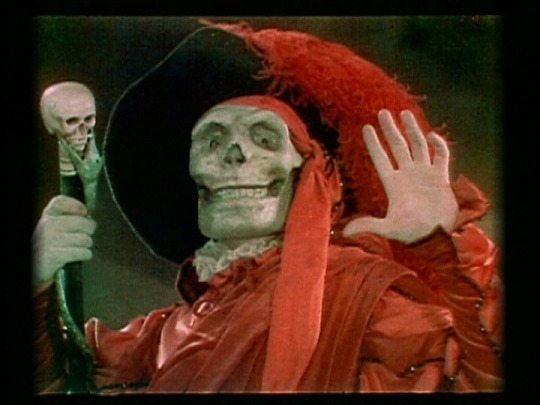
Universal’s Soundstage 28 was an integral part of the VIP tour at Universal Studios Hollywood for decades. Though the orchestra seats and the stage of the film’s Palais Garnier had long gone, the backside box seats of the auditorium remained. Stage 28 featured in numerous films after The Phantom of the Opera, including Dracula (1931), the Lon Chaney biopic Man of a Thousand Faces (1957), Psycho (1960), Charade (1963), Jurassic Park (1993), How the Grinch Stole Christmas (2000), and The Muppets (2011). The soundstage was also supposedly haunted, with individuals claiming to see a caped figure (Lon Chaney as the Phantom?) running around the catwalks, lights flickering on and off, and doors opening and closing on their own. In 2014, after standing for almost ninety years, Universal decided to demolish Stage 28 so as to expand its theme park. However, the historic set escaped the wrecking ball, as Universal decided to disassemble the set, place it into storage, and perhaps someday reassemble it. It is a fate far kinder than almost all other production design relics from the silent era.
Unlike what was coming out of Weimar Germany in the 1920s in the form of German Expressionism, American horror films had no template to follow when The Phantom of the Opera arrived in theaters. There would be no codification of American horror cinema’s tropes and sense of timing until the next decade. But without 1925’s The Phantom of the Opera, Universal would never become the house of horror it did in the 1930s through the early ‘50s (including the Dracula, Frankenstein, Mummy, Invisible Man, Wolf Man, and Creature from the Black Lagoon series). So, unbound by any unwritten guidelines, 1925’s The Phantom of the Opera – a horror film, but arguably also a melodrama with elements of horror – consumes the viewer with its chilling atmosphere and, from Lon Chaney, one of the best cinematic performances ever, without any qualification. For silent film novices, this is one of the best films to begin with (outside the comedies of Charlie Chaplin, Buster Keaton, and Harold Lloyd). Regardless of one’s familiarity with silent film, The Phantom of the Opera is a cinematic milestone.
My rating: 9.5/10
^ Based on my personal imdb rating. My interpretation of that ratings system can be found in the “Ratings system” page on my blog. Half-points are always rounded down.
For more of my reviews tagged “My Movie Odyssey”, check out the tag of the same name on my blog.
This is the twenty-third Movie Odyssey Retrospective. Movie Odyssey Retrospectives are reviews on films I had seen in their entirety before this blog’s creation or films I failed to give a full-length write-up to following the blog’s creation. Previous Retrospectives include Dracula (1931 English-language version), Oliver! (1968), and Peter Pan (1953).
#The Phantom of the Opera#Rupert Julian#Lon Chaney#Mary Philbin#Norman Kerry#Carl Laemmle#Gaston Leroux#Ernst Laemmle#Edward Sedgwick#Arthur Edmund Carewe#Gibson Gowland#Snitz Edwards#Virginia Pearson#Edward Curtiss#Maurice Pivar#Gilmore Walker#Lois Weber#silent film#TCM#My Movie Odyssey
6 notes
·
View notes
Text
Gotham Rogues Voice Headcanon Updates
Like I said, rogue headcanons, I’ll add links and such.
Angel Vargas: Rob Thomas (Smooth, All That I Am)
Drury Walker: The Unlikely Candidates (Bells, Oh My Dear Lord)
Edward Nygma: Imagine Dragons (Gold, Tiptoe)
Garfield Lynns: grandson (Oh No!, Best Friends)
Harley Quinn: Dead Posey (Boogeyman, Freak Show)
Harvey Dent: Shinedown (Call Me, Monsters)
Jack Napier: The Lumineers (Scotland, Ophelia)
Jervis Tetch: Cosmo Sheldrake (Come Along, Pelicans We)
Jonathan Crane: Poor Man’s Poison (Hey Mister, Devil’s Price)
Mary Dahl: Octavia Rose (Lost in the Rhythm, Delight)
Maximilian Zeus: Hozier (From Eden, Arsonist’s Lullaby)
Maxwell Mavis: Stromae (tous les mêmes, Ta fête)
Neil Richards: Soundgarden (Black Hole Sun, Fell On Black Days)
Pamela Isley: Bishop Briggs (CHAMPION, Wild Horses)
Viktor Zsasz: X Ambassadors (My Own Monster, Unsteady)
Waylon Jones: Johnny Cash (Wayfaring Stranger, God’s Gonna Cut You Down)
And I also made a playlist for the headcanons on both Youtube Music [Link] and Spotify [Link]
#lawfulverse#headcanons#bane#drury walker#killer moth#edward nygma#riddler#garfield lynns#firefly#harleen quinzel#harley quinn#harvey dent#two face#jack napier#jonathan crane#scarecrow#jervis tetch#mad hatter#mary dahl#baby doll dc#maximilian zeus#maxie zeus#maxwell mavis#music meister#neil richards#mad mod#pamela isley#poison ivy#viktor zsasz#zsasz
53 notes
·
View notes
Text
Learning the stories of female Pinkerton agents is a mix of "Wow these women are badass and far more courageous than I ever could be!" and "Oh. They did all that and basically got a footnote in the history books despite having a major impact in this major historical event. How wonderful -_-"
I mean most of the men got ignored too because this was all *secret spy stuff* but still :/
#hiatus nonsense#pinkerton national detective agency#history stuff#kate warne#hattie lewis lawton#elizabeth baker#mary touvestre#elizabeth van lew#dr mary edwards walker#miss seaton#gonna write this article purely to educate people about them#and these are just the ones i know!#badass women
13 notes
·
View notes
Text
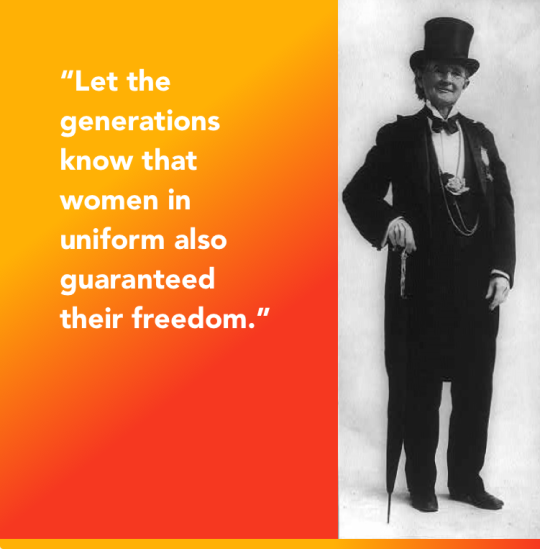
Let the generations know that women in uniform also guaranteed their freedom. -Mary Edward Walker
8 notes
·
View notes
Text
listen to: TAURUS EDITION

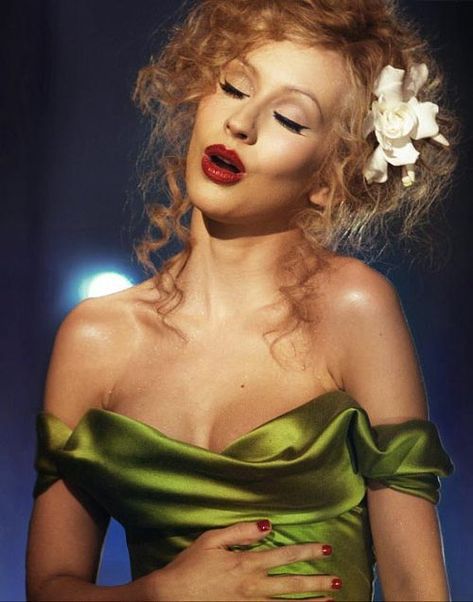

TAURUS MOON
jaehyun (nct) - moon in 2nd house, christina aguilera - moon in 2nd house, demi lovato - moon in 10th house (tri. venus), melanie martinez - moon in 6th house, kelly clarkson - (unknown), mick jagger (the rolling stones) - moon in 12th house, nicole scherzinger (the pussycat dolls) - moon in 8th house, elton john - moon in 4th house, zendaya - moon in 3rd house, nick jonas - moon in 10th house, pharrell williams - moon in 11th house (sext. mercury), j-hope - (unknown), childish gambino - moon in 8th house, siouxsie sioux (siouxsie and the banshees) - moon in 5th house (conj. merucy), janis ian - moon in 9th house (conj. merucy), diana ross - moon in 6th house (sext. venus), jae (day6) - moon in 2nd house

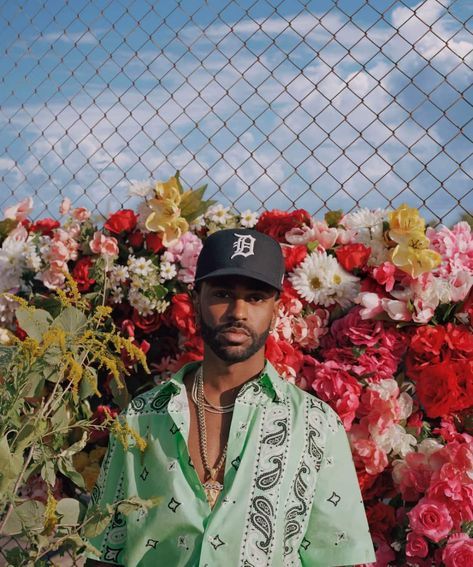

TAURUS VENUS
ariana grande - venus in 4th house, big sean - venus in 2nd house, lana del rey - venus in 7th house, jhené aiko - venus in 5th house , kanye west - venus in 10th house, prince - venus in 6th house, paul mccartney (the beatles) - venus in 9th house (squ moon), grimes - venus in 6th house, fergie - venus in 10th house, iggy azalea - (unknown), jessie j - venus in 12th house, baekhyun (exo-k) - venus in the 12th house, cyndi lauper - venus in 3rd house (opp. moon), lil nas x - venus in 11th house (tri. moon)

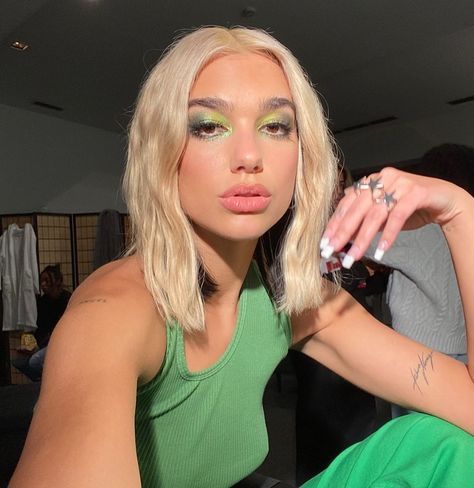

MOON IN 2ND HOUSE
beyoncé - moon in scorpio, dua lipa - moon in cancer, christina aguilera - moon in taurus, jennifer lopez - moon in scorpio, jaden smith - moon in capricorn, kid cudi - moon in capricorn, ozzy osbourne (black sabbath) - moon in capricorn, becky g - moon in sagittarius, jaehyun (nct) - moon in taurus, rosé (blackpink) - moon in aries, youngjae (got7) - moon in scorpio, summer walker - moon in aqaurius, troye sivan - moon in virgo, meghan trainor - moon in aries, perrie edwards - moon in aries, victoria monét - moon in virgo, ashe - moon in gemini, jae (day6) - moon in taurus, august alsina - moon in sagittarius, mitski - moon in capricorn, anne-marie - moon in virgo, lizzo - moon in virgo

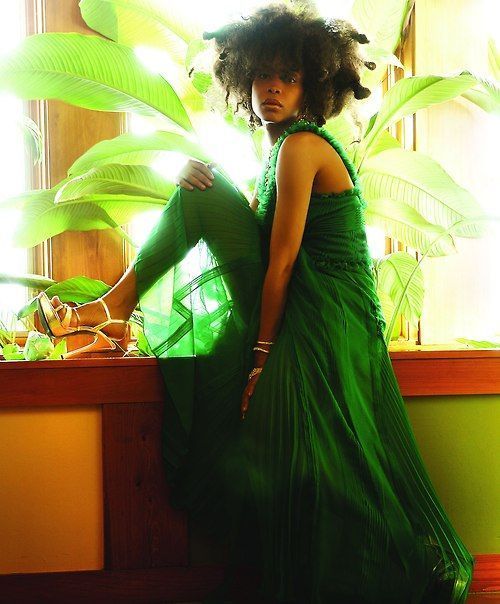

VENUS IN 2ND HOUSE
jisoo (blackpink) - venus in scorpio, erykah badu - venus in capricorn, kid cudi - venus in capricorn, elvis presley -venus in capricorn, paris hilton - venus in aquarius, demi lovato - venus in virgo, björk - venus in capricorn, elton john - venus in aquarius, sting (the police) - venus in virgo, kesha - venus in capricorn, thom yorke (radiohead) - venus in scorpio, anthony kiedis (red hot chili peppers) - venus in scorpio, aurora - venus in gemini, big sean - venus in taurus, denzel curry - venus in capricorn, bryson tiller - venus in aquarius, 21 savage - venus in sagittarius, miranda lambert - venus in libra
playlist post
main masterlist
#taurus moon#taurus venus#taurus#moon in 2nd house#venus in 2nd house#astro notes#astrology#astro tumblr#astro community#astro observations#astro placements#astroblr#astrology notes#astrology observations
70 notes
·
View notes
Text
Mary & George First Look Teaser-Trailer - Coming Soon.
Credit: Sky
CAST:
-Nicholas Galitzine as George Villiers
-Julianne Moore as Mary Villiers
-Tony Curran as King James I
-Niamh Algar as Sandie
-Nicola Walker as Lady Hatton
-Trine Dyrholm as Queen Anne
-Sean Gilder as Sir Thomas Compton
-Adrian Rawlins as Sir Edward Coke
-Mark O’Halloran as Sir Francis Bacon
-Laurie Davidson as Somerset
-Samuel Blenkin as Prince Charles
-Jacob McCarthy as Kit Villiers
-Tom Victor as John Villiers
-Alice Grant as Susan Villiers
-Amelia Gething as Frances Coke
-Mirren Mack as Katherine Manners
-Rina Mahoney as Laura Ashcattle
-Simon Russell Beale as Sir George Villiers
92 notes
·
View notes
Text
The Redamancy AU
Redamancy AU is what I affectionately call my Ninjago re-write. I'd thought I'd share some changes to the main cast's pre-main story lives for funsies :D
Kai:
He and Nya are raised by their mother's bestfriend(Tomoe Kobayashi) and her best friend's husband husband(Hikaru Kobayashi).
Kai got his fire element from his mother Amara.
He lives in a village that lays at the base of the mountain that the monastery lays upon.
Kai works with the Kobayashi family since it was easy work and it gave him daylight hours to do whatever.
Kai has Dyslexia and ADHD(Attention Deficit Hyperactivity Disorder)
His full name is Kai Isamu Smith. He is sixteen years old. His birthday is August 1st.
Nya:
She and Kai are raised by their mother's bestfriend(Tomoe Kobayashi) and her bestfriend's husband(Hikaru Kobayashi)
Nya operates as Samurai X and prefers to work alone rather than as a team anyway.
Nya listens to a radio station called 'South Eastern Archipelago Oceanic Radio Station' or SEAORS that reports the ever changing status of the South Eastern Archipelago. She likes the pirate stories.
Nya had an apprenticeship with an inventor named Marnie Grace who lived in the village Nya grew up in. Nya eventually ends it to become Samurai X.
Nya has a special assistant she built named Ruth who keeps her lab clean, as well as alert Nya to disturbances in Ninjago and keep track of correspondence between Destiny's Bounty.
Her full name is Nya Tomoe Smith. She is fifteen years old. Her birthday is October 29th.
Lloyd:
Lloyd had a caretaker named Delphi who acts more like an older sister than a mother. But Lloyd doesn't care. He's just happy to have someone. Not like he'd admit it or anything.
Lloyd has purple eyes and very sharp canines from being conceived by Misako and Lord Garmadon while Lord Garmadon was very much so a demon-like man.
He wanted to be a comic artist before he got sent into the Ninjago foster system.
Lloyd has ADHD(Attention Deficit Hyperactivity Disorder) and ASD(Autism Spectrum Disorder)
Garmadon is not Lloyd's actual last name nor is it Lord Garmadon's actual name. Garmadon was an ancient word in a now long dead language of Ninjago. Garmadon meant 'Dominant, In Control'
Lloyd's full name is Lloyd Montgomery Ito. His birthday is July 5th. Lloyd is eight years old.
Zane:
Zane causes extreme feelings of unease around normal people and people feel extremely cold when around him.
Zane has been chased out of 16 villages because they thought him an Oni desperately trying to hold onto a human form.
Sensei Wu found Zane when he went to investigate the claims of a shapeshifting Oni. Sensei Wu brought Zane to The Monastery under the promise of a family and not being chased out of another village.
Zane is specifically built to function and grow like a human because although an artificial automaton, the remnants of the last Elemental Master of Ice live and breathe within him, making him an elemental master in wait of finding his old life.
Zane is very friendly with the Yōkai that Master Wu employs to keep his information webs strong. He is especially friendly with the kitsune on the coastal village of Hayami in the South Eastern Archipelago.
Zane's full name is Zane Boreas Julien. His creation date is February 18th. He is sixteen years old.
Jay:
Jay's biological parents are a swindler named Flynn Watts and a school teacher named Mary Walker. Mary Walker offered Jay to her brother Edward and his wife Janis because Mary didn't have the salary for raising Jay. Edward and Janis jumped at the opportunity to raise a child. No one told Jay his Aunt Mary was actually his mother.
Jay had a pet guinea pig as a kid named 'Scraps'. Scraps fell into a trash compacter.
Jay was homeschooled by Janis and Edward until fourth grade. He exceled so hard he ended up skipping a few grades and being a high school sophomore at age thirteen before Sensei Wu found him.
Jay took online classes while training with Sensei Wu and is the only one of the ninja to have finished high school.
Jay was taught how to ballroom dance by Janis who used to competitively ballroom dance before getting too old to safely do it without hurting himself.
Jay's full name is Jay Benedict Walker. His birthday is September 10th. He is fifteen years old.
Cole:
Cole has a childhood bestfriend/girlfriend he calls Aster who he writes letters to. He sends her letters scented with his cologne. Aster sends dried aster flowers enclosed in her letters to him.
Cole is a naturally big boi. His father used to hate this.
Cole loves cake so much because he never was allowed to have any as a kid and to him cake tastes like freedom.
Cole ran away from The Martin Oppenheimer School of Performing Arts after two days. He was fourteen. Sensei Wu found Cole and convinced Cole to come with him.
Cole was the first ninja taken in by Sensei Wu.
Cole's full name is Nicholas Claude Brookstone. His birthday is December 30th. He is seventeen years old.
#fanfic#fanfiction#wattpad#ninjago#lego ninjago#ninjago fanfiction#ninjago kai#ninjago jay#ninjago zane#ninjago cole#ninjago nya#ninjago lloyd#kai smith#jay walker#zane julien#cole brookstone#nya smith#lloyd garmadon#kai ninjago#jay ninjago#zane ninjago#cole ninjago#nya ninjago#lloyd ninjago#ninjago headcanons
44 notes
·
View notes
Text






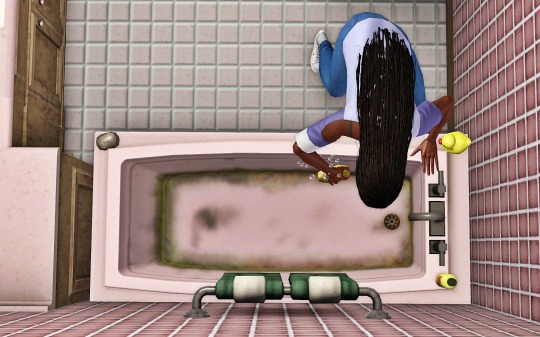
GOLDBERG
After years in the Funeral Director career (reaching level 8!), Jared finally bagged a job at the law firm and registered as a lawyer. The first course of action was beach day celebrations, and attending the small congratulatory party the Macdonalds threw for him. He got Business tycon --- Antonio Lopez to sign up as his first client. (I never expanded on where Doug [from the Martins] got his initial supply of guns... well, it's Antonio, I have him set as the local gun and drug smuggler.)
Other clients, I want Jared to represent in the future will be his wife (writer), Marie Le Pen (politician), the Rocks (comedian/social media influencer pair), Edward Burns (professional athlete), Bella Lotario (actor), Walker Wells (band group member), Doug Martins (criminal) and the Moreaus (wine business powerhouse from France.)
It'll take a while for me to post more content because I'll be playing some families for the first time next round and I won't have a lot of pictures. You can look forward to my wine-making French sims next, though (they also like horses)!
50 notes
·
View notes
Text

Edna Mae Harris (September 29, 1914 – September 15, 1997), sometimes credited as Edna May Harris was an American actress and singer. Harris was one of the first African–American film actress of the late 1930s and early 1940s, appearing in films featuring mostly African–American casts.
Born in Harlem, Harris parents were Sam, a boxer and customs inspector; Her mother Mary Harris (née Walker) worked as a maid. Harris' family is noted as one of the first families to have migrated to Harlem. Settling near the Lafayette Theater, Harris was convinced into pursuing a career in show business by Ethel Waters and Maud Russell who were frequent visitors to her family home. After being coached on her singing and dancing by Waters and Russell, Harris began performing in the Theater Owners Booking Association (TOBA). An African-American vaudeville circuit, Harris performed with TOBA from 1929 until 1933.
Harris attended Wadleigh High School (later known as Wadleigh High School for Girls) in Manhattan. During the summer after her sophomore year of high school, Harris worked at the Alhambra Theater doing dramatic sketches with a stock company. During this period, Harris received excellent training in diction and stage delivery through her association with veteran performers. Harris was also an excellent swimmer in high school, and in 1928 she entered the New York Daily News' Swimming Meet and won a championship.
Harris first real Hollywood break came when she landed a part in The Green Pastures (1936), portraying Zeba, starring with Eddie 'Rochester' Anderson. Harris was a leading lady in Spirit of Youth (1938), the story of the rise of boxer Joe Thomas, which paralleled the life of Joe Louis. Harris also had leading roles in Oscar Micheaux films, Lying Lips (1939), and The Notorious Elinor Lee (1940). Her film credits also include such Hollywood films as Bullets or Ballots (1936), Private Number (1936), and Garden of Allah (1936), and the independent film Paradise in Harlem in 1939. Between picture commitments she toured with Noble Sissle's Orchestra as a featured vocalist along with Lena Horne and Billy Banks. In 1942, she played fourteen weeks at the old Elks' Rendezvous as the mistress of ceremonies and announced a weekly radio show over station WMCA in New York City. She also did character dialect parts on many broadcasts for the Columbia Workshop Program. Edna Mae Harris got to tell her story in her later years in the documentary, Midnight Ramble (1994), about independently produced black films.
Harris was married twice and had no children. Her first marriage was to Edward Randolph from 1933 until 1938, then to Harlem nightclub owner Walter Anderson from 1951 until his death in 1983. Harris dated boxer Joe Louis sometime during 1939 and 1940. Harris dated Robert Paquin, who co-starred with her in the Lying Lips from 1941 until 1942. Harris died of a heart attack on September 15, 1997 at the age of 82.
#black literature#black tumblr#black excellence#black community#civil rights#black girl magic#blackexcellence365#beautiful#strong black woman
16 notes
·
View notes
Text
2023 BAFTA Awards — Winners
Best Film
“All Quiet On The Western Front” — WINNER
“The Banshees Of Inisherin”
“Elvis”
“Everything Everywhere All At Once”
“Tár”
Outstanding British Film
“Aftersun”
“The Banshees Of Inisherin” — WINNER
“Brian And Charles”
“Empire Of Light”
“Good Luck To You, Leo Grande”
“Living”
“Roald Dahl’s Matilda The Musical”
“See How They Run”
“The Swimmers”
“The Wonder”
Director
Edward Berger, “All Quiet On The Western Front” — WINNER
Martin McDonagh, “The Banshees Of Inisherin”
Park Chan-wook, “Decision To Leave”
Daniel Kwan, Daniel Scheinert, “Everything Everywhere All At Once”
Todd Field, “Tár”
Gina Prince-Bythewood, “The Woman King”
Leading Actress
Cate Blanchett, “Tár” — WINNER
Viola Davis, “The Woman King”
Danielle Deadwyler, “Till”
Ana De Armas, “Blonde”
Emma Thompson, “Good Luck To You, Leo Grande”
Michelle Yeoh, “Everything Everywhere All At Once”
Leading Actor
Austin Butler, “Elvis” — WINNER
Colin Farrell, “The Banshees Of Inisherin”
Brendan Fraser, “The Whale”
Daryl Mccormack, “Good Luck To You, Leo Grande”
Paul Mescal, “Aftersun”
Bill Nighy, “Living”
Supporting Actress
Angela Bassett, “Black Panther: Wakanda Forever”
Hong Chau, “The Whale”
Kerry Condon, “The Banshees Of Inisherin” — WINNER
Dolly De Leon, “Triangle Of Sadness”
Jamie Lee Curtis, “Everything Everywhere All At Once”
Carey Mulligan, “She Said”
Supporting Actor
Brendan Gleeson, “The Banshees Of Inisherin”
Barry Keoghan, “The Banshees Of Inisherin” — WINNER
Ke Huy Quan, “Everything Everywhere All At Once”
Eddie Redmayne, “The Good Nurse”
Albrecht Schuch, “All Quiet On The Western Front”
Micheal Ward, “Empire Of Light”
Outstanding Debut by a British Writer, Director or Producer
“Aftersun” – Charlotte Wells (Writer/Director) — WINNER
“Blue Jean” – Georgia Oakley (Writer/Director), Hélène Sifre (Producer)
“Electric Malady” – Marie Lidén (Director)
“Good Luck To You, Leo Grande” – Katy Brand (Writer)
“Rebellion” – Maia Kenworthy and Elena Sánchez Bellot (Directors)
Film Not in English Language
“All Quiet On The Western Front” — WINNER
“Argentina, 1985”
“Corsage”
“Decision To Leave”
“The Quiet Girl”
Documentary
“All That Breathes”
“All The Beauty And The Bloodshed”
“Fire Of Love”
“Moonage Daydream”
“Navalny” — WINNER
Animated Film
“Guillermo Del Toro’s Pinocchio” — WINNER
“Marcel The Shell With Shoes On”
“Puss In Boots: The Last Wish”
“Turning Red”
Original Screenplay
Martin McDonagh, “The Banshees Of Inisherin” — WINNER
Daniel Kwan, Daniel Scheinert, “Everything Everywhere All At Once”
Tony Kushner, Steven Spielberg, “The Fabelmans”
Todd Field, “Tár”
Ruben Östlund, “Triangle Of Sadness”
Adapted Screenplay
Edward Berger, Lesley Paterson, Ian Stokell, “All Quiet On The Western Front” — WINNER
Kazuo Ishiguro, “Living”
Colm Bairéad, “The Quiet Girl”
Rebecca Lenkiewicz, “She Said”
Samuel D. Hunter, “The Whale”
Original Score
Volker Bertelmann, “All Quiet On The Western Front” — WINNER
Justin Hurwitz, “Babylon”
Carter Burwell, “The Banshees Of Inisherin”
Son Lux, “Everything Everywhere All At Once”
Alexandre Desplat, “Guillermo Del Toro’s Pinocchio”
Casting
Lucy Pardee, “Aftersun”
Simone Bär, “All Quiet On The Western Front”
Nikki Barrett, Denise Chamian, “Elvis” — WINNER
Sarah Halley Finn, “Everything Everywhere All At Once”
Pauline Hansson, “Triangle Of Sadness”
Cinematography
James Friend, “All Quiet On The Western Front” — WINNER
Greig Fraser, “The Batman”
Mandy Walker, “Elvis”
Roger Deakins, “Empire Of Light”
Claudio Miranda, “Top Gun: Maverick”
Editing
“All Quiet On The Western Front”
“The Banshees Of Inisherin”
“Elvis”
“Everything Everywhere All At Once” — WINNER
“Top Gun: Maverick”
Production Design
“All Quiet On The Western Front”
“Babylon” — WINNER
“The Batman”
“Elvis”
“Guillermo Del Toro’s Pinocchio”
Costume Design
“All Quiet On The Western Front”
“Amsterdam”
“Babylon”
“Elvis” — WINNER
“Mrs. Harris Goes To Paris”
Make-Up & Hair
“All Quiet On The Western Front”
“The Batman”
“Elvis” — WINNER
“Roald Dahl’s Matilda The Musical”
“The Whale”
Sound
“All Quiet On The Western Front” — WINNER
“Avatar: The Way Of Water”
“Elvis”
“Tár”
“Top Gun: Maverick”
Special Visual Effects
“All Quiet On The Western Front”
“Avatar: The Way Of Water” — WINNER
“The Batman”
“Everything Everywhere All At Once”
“Top Gun: Maverick”
British Short Animation
“The Boy, The Mole, The Fox And The Horse” — WINNER
“Middle Watch”
“Your Mountain Is Waiting”
British Short Film
“The Ballad Of Olive Morris”
“Bazigaga”
“Bus Girl”
“A Drifting Up”
“An Irish Goodbye” — WINNER
EE Rising Star Award
Aimee Lou Wood
Daryl McCormack
Emma Mackey — WINNER
Naomi Ackie
Sheila Atim
93 notes
·
View notes
Text
Title: ...still round the corner we may meet
Author: https://archiveofourown.org/users/Deniz_B/pseuds/Deniz_B
Artist: https://instagram.com/_mahnaah_
Beta reader:https://x.com/Gold_galloon?t=GhDU6GYBnbnvtU7Zrff1xQ&s=09
Characters: Stede Bonnet, Blackbeard | Edward Teach, Israel Hands, Mary Allamby Bonnet, Doug, Fang, Lucius Spriggs, Black Pete, The Swede, Roach, Nathaniel Buttons, Jim Jimenez, Oluwande Boodhari, Frenchie, Wee John Feeney
Relationship(s): Blackbeard | Edward Teach/Stede Bonnet
Rating: E
Additional Tags: written before S2, Walking, Meet-Cute, Stede Bonnet Loves Blackbeard | Edward Teach, Blackbeard | Edward Teach Loves Stede Bonnet, Found Family, First Time
Warnings: None
Summary: Stede and Mary moved the family to Switzerland for Mary’s job. The kids were young, and Stede didn’t have a working visa; he stayed at home. By the time the kids started school full time, he and Mary agreed that, for the sake of the children, a divorce was the only option. That way, they might at least preserve their friendship.
A new job, a new apartment, a routine of his own.
Committed to remaining friends, Stede and Mary decide to join a Saturday morning walking club. For the first time ever, for a few hours each week, Stede's free to spend time with adults who aren’t dull-as-dishwater colleagues, equally-exhausted fellow parents, or disastrous dates. He might even find a friend—or more.
Each week, Stede interacts with a different member of the Random Rambles crew, making ever more radical decisions about his life (quitting his job! opening a community centre!)--and growing closer and closer to fellow walker Ed.
Where might he be by summer's end?
Word Count: 37,051
Link to story and art: https://archiveofourown.org/works/51134728
#ofmd#our flag means death#amwriting#stede bonnet#thisdaywewrite#shoveitintotheluckhole#edward teach#gentlebeard#ofmd big bang#ofmd big bang 2023
21 notes
·
View notes